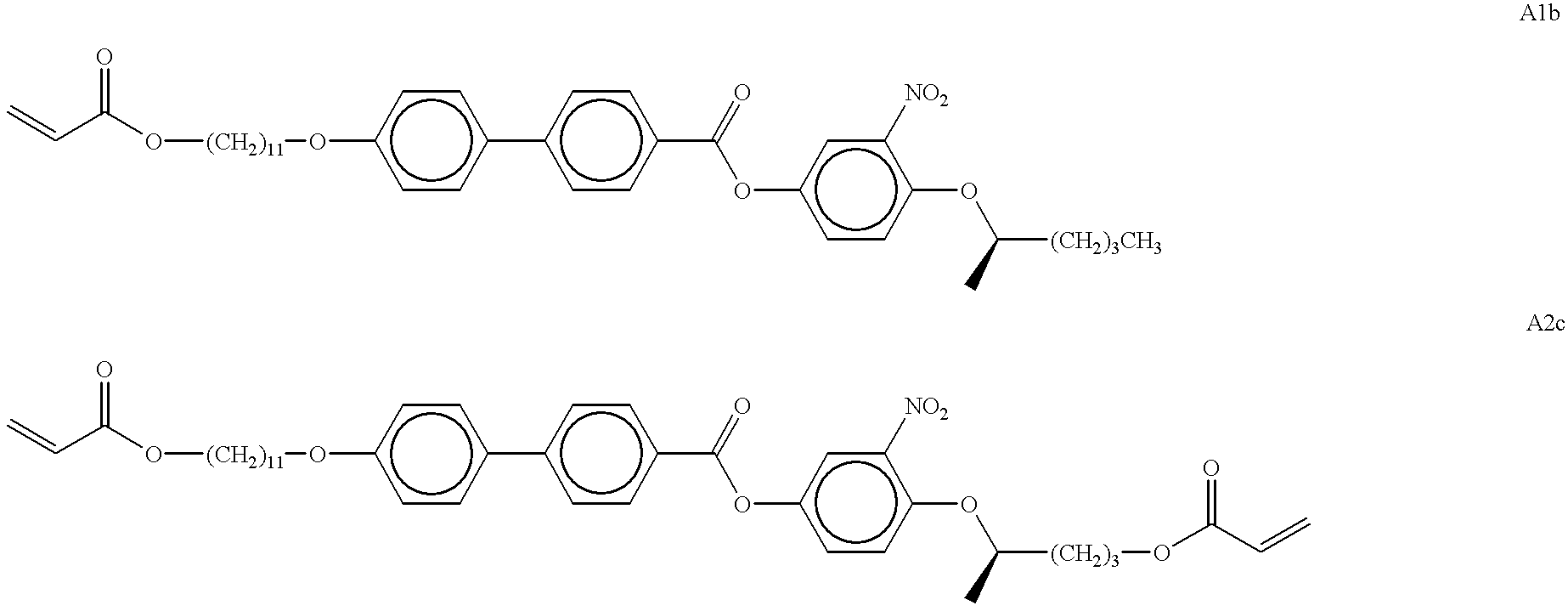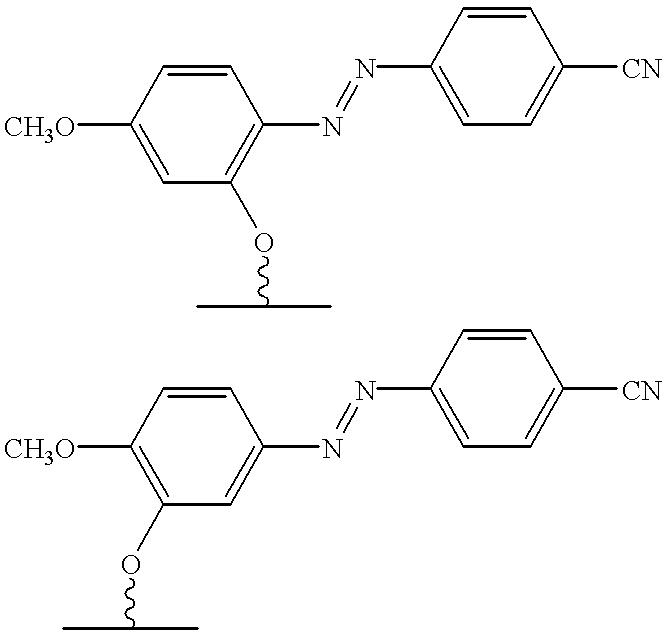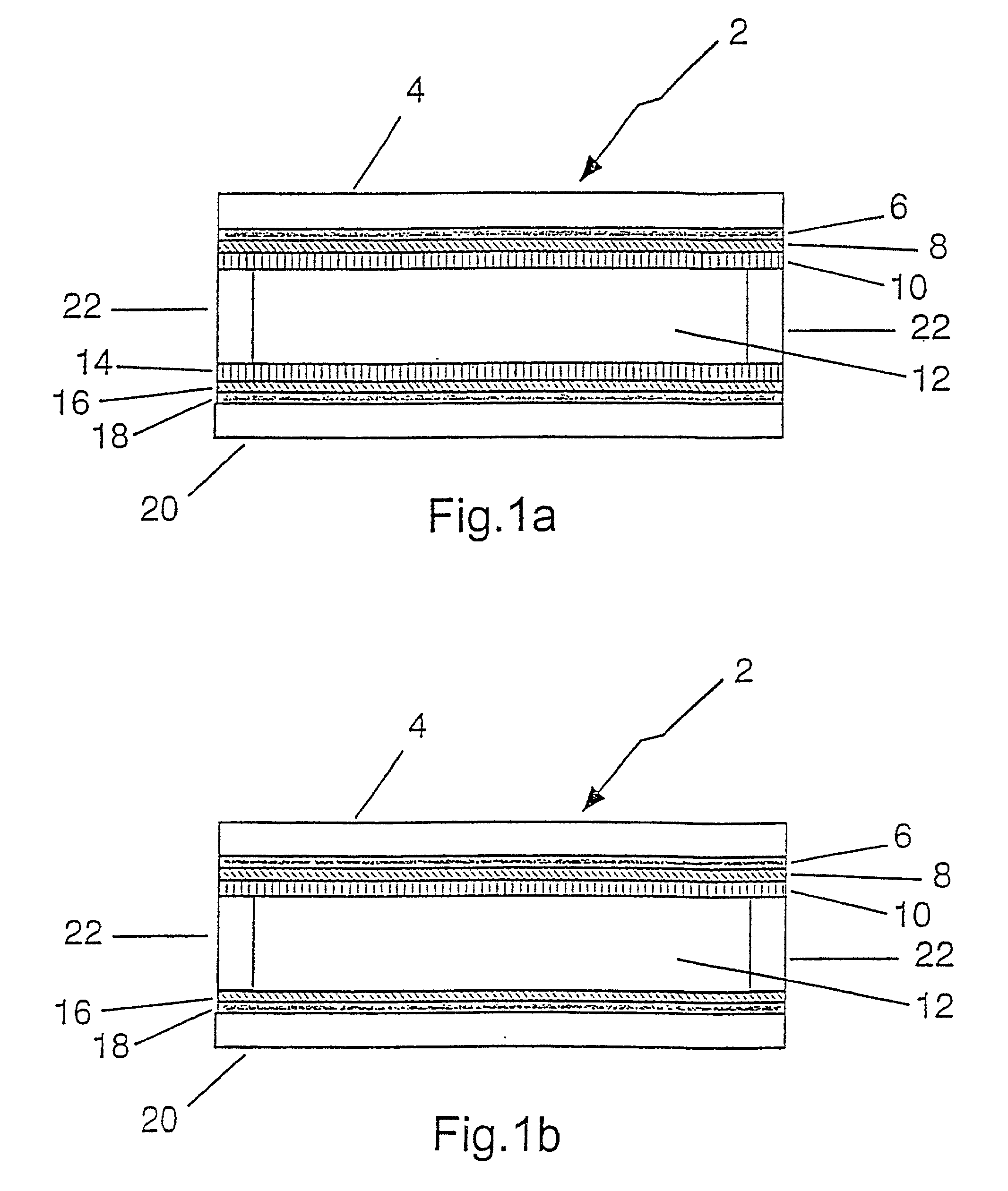Liquid crystal device and a method for producing it
a liquid crystal and device technology, applied in the field of liquid crystal devices, can solve the problems of non-satisfactory angular dependence of contrast, slow conventional nematic display with dielectric coupling to the electric field, and inability to optimize all important properties, etc., to achieve the effect of quick response of smectic c and increase field strength
- Summary
- Abstract
- Description
- Claims
- Application Information
AI Technical Summary
Benefits of technology
Problems solved by technology
Method used
Image
Examples
example 1
Method for Preparation
[0054] The following example describes a method for preparation of a chiral smectic surfaces forming e.g. the first dynamic alignment layer 10 in FIG. 1a.
[0055] The inner surface of the glass substrate 4 is first covered with a transparent, conductive ITO film 6 and thereafter with a passive alignment layer 8 of buffed SiOx, evaporated at normal incidence. As well known, this passive alignment layer 8 gives a unidirectional planar alignment of most liquid crystal materials. In order to manufacture the dynamic surface alignment layer 10, the passive SiOx alignment layer 8 is now precoated with a thin layer of mixture of photoreactive liquid crystal monomers A1b / A2c (20 / 80% wt) and photoinitiator (usually added in a very small amount) by spinning a delute solution of this mixture in chloroform (about 10% wt). The structures of the monomers are the following: 1
[0056] As can be seen, A1b and A2c are monofunctional and bifunctional monomers, respectively, and both a...
example 2
Method for Preparation
[0057] The following example also describes a method for preparation of a chiral smectic surface forming e.g. the first dynamic alignment layers 10 in FIG. 1a. The conductive ITO film 6 of glass substrate 4 is covered by a passive alignment layer 9 of photochromic material. This material is of the side-on type of attachment of azobenzene mieties at the ortho- or metha-position anchored onto silica surface through silylation, for instance. The molecular structure of such a material could be the following: 2
[0058] Then, the substrate is exposed to a linearly polarized UV-light which results in, as well known, a uniform planar alignment of the liquid crystal molecules in contact. Thereafter, the passive alignment layer is precoated by a photoreactive monomer A1b according to the procedure described in Example 1. After the polymerization, the molecules of this material seems to be uniformly oriented, well anchored to the passive alignment layer and insoluble in the...
example 3
Method for Preparation
[0059] In this example, the photoreactive monomer mixture A1b / A2c is mixed with a dichroic azo-dye or another photochromic material, which molecules can be aligned by a linearly polarized light. The wavelength used for the light controlled alignment of the dye molecules, and thus the alignment of the liquid crystal molecules in the first dynamic alignment layer 10, may differ from the wavelength of the light resulting in the photopolymerization of the photoreactive monomer mixture. Thus, the molecules of the dynamic alignment layers 10 will be first unidirectionally aligned by the linearly polarized light, and then photopolymerized.
In-plane Switching of Bulk Liquid Crystals
[0060] Some examples illustrating the induced in-plane switching according to the inventive principle will now be described.
[0061] The chiral surface mediated device (CSMD) used in the following examples consisted of two parallel electroded glass substrates 4 and 20 with a micron-size gap (sp...
PUM
| Property | Measurement | Unit |
|---|---|---|
| angle | aaaaa | aaaaa |
| apex angle | aaaaa | aaaaa |
| thickness | aaaaa | aaaaa |
Abstract
Description
Claims
Application Information
 Login to View More
Login to View More - R&D
- Intellectual Property
- Life Sciences
- Materials
- Tech Scout
- Unparalleled Data Quality
- Higher Quality Content
- 60% Fewer Hallucinations
Browse by: Latest US Patents, China's latest patents, Technical Efficacy Thesaurus, Application Domain, Technology Topic, Popular Technical Reports.
© 2025 PatSnap. All rights reserved.Legal|Privacy policy|Modern Slavery Act Transparency Statement|Sitemap|About US| Contact US: help@patsnap.com



